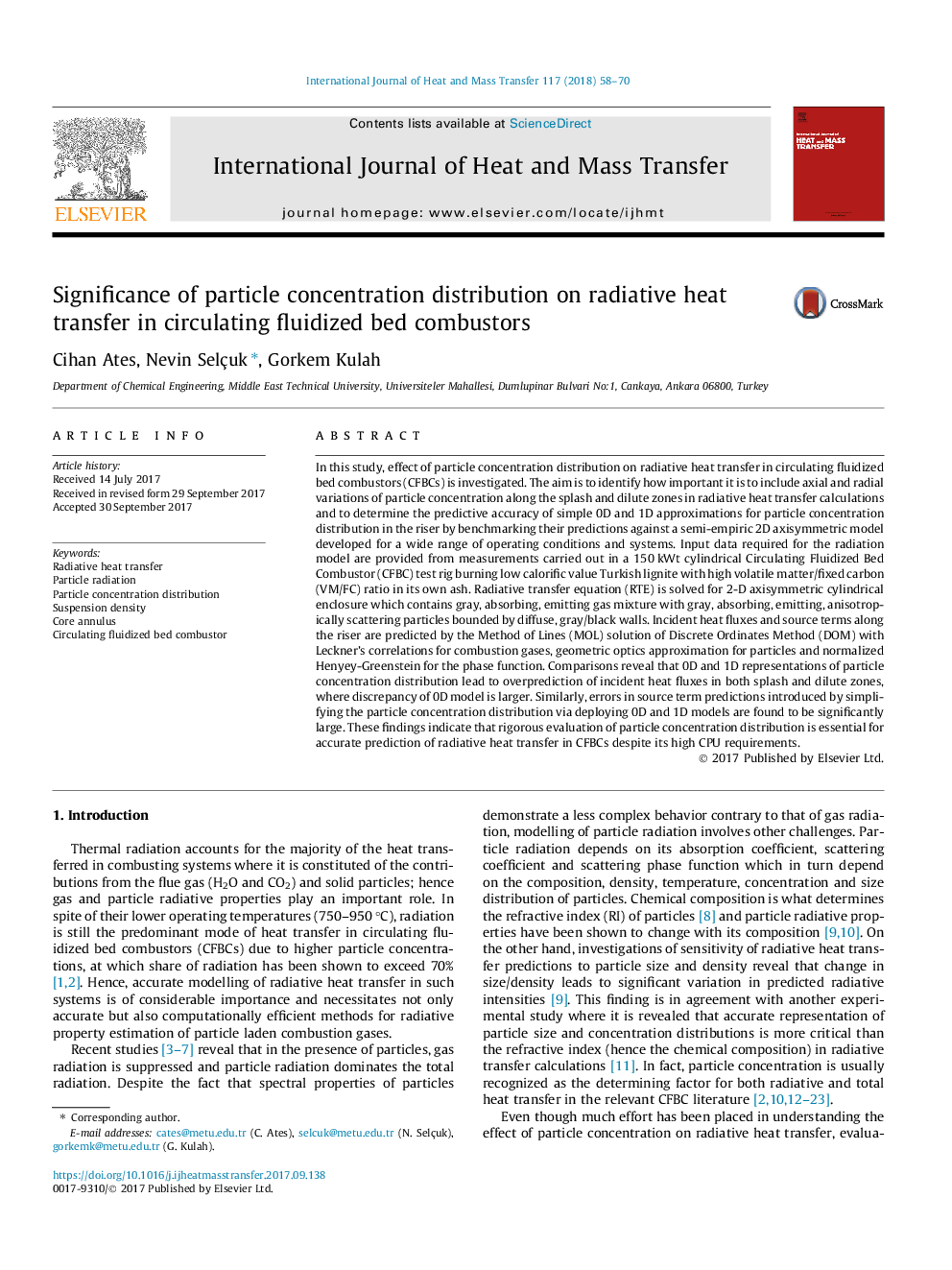| کد مقاله | کد نشریه | سال انتشار | مقاله انگلیسی | نسخه تمام متن |
|---|---|---|---|---|
| 4993379 | 1458023 | 2018 | 13 صفحه PDF | دانلود رایگان |
عنوان انگلیسی مقاله ISI
Significance of particle concentration distribution on radiative heat transfer in circulating fluidized bed combustors
ترجمه فارسی عنوان
اهمیت توزیع غلظت ذرات در انتقال گرمای تابشی در فشرده سازی های حرارتی مایع در گردش
دانلود مقاله + سفارش ترجمه
دانلود مقاله ISI انگلیسی
رایگان برای ایرانیان
کلمات کلیدی
انتقال حرارت شعاعی، اشعه ذرات، توزیع غلظت ذرات، تراکم تعلیق، هسته حلقه، مشعل تخت مایع گردش
موضوعات مرتبط
مهندسی و علوم پایه
مهندسی شیمی
جریان سیال و فرایندهای انتقال
چکیده انگلیسی
In this study, effect of particle concentration distribution on radiative heat transfer in circulating fluidized bed combustors (CFBCs) is investigated. The aim is to identify how important it is to include axial and radial variations of particle concentration along the splash and dilute zones in radiative heat transfer calculations and to determine the predictive accuracy of simple 0D and 1D approximations for particle concentration distribution in the riser by benchmarking their predictions against a semi-empiric 2D axisymmetric model developed for a wide range of operating conditions and systems. Input data required for the radiation model are provided from measurements carried out in a 150â¯kWt cylindrical Circulating Fluidized Bed Combustor (CFBC) test rig burning low calorific value Turkish lignite with high volatile matter/fixed carbon (VM/FC) ratio in its own ash. Radiative transfer equation (RTE) is solved for 2-D axisymmetric cylindrical enclosure which contains gray, absorbing, emitting gas mixture with gray, absorbing, emitting, anisotropically scattering particles bounded by diffuse, gray/black walls. Incident heat fluxes and source terms along the riser are predicted by the Method of Lines (MOL) solution of Discrete Ordinates Method (DOM) with Leckner's correlations for combustion gases, geometric optics approximation for particles and normalized Henyey-Greenstein for the phase function. Comparisons reveal that 0D and 1D representations of particle concentration distribution lead to overprediction of incident heat fluxes in both splash and dilute zones, where discrepancy of 0D model is larger. Similarly, errors in source term predictions introduced by simplifying the particle concentration distribution via deploying 0D and 1D models are found to be significantly large. These findings indicate that rigorous evaluation of particle concentration distribution is essential for accurate prediction of radiative heat transfer in CFBCs despite its high CPU requirements.
ناشر
Database: Elsevier - ScienceDirect (ساینس دایرکت)
Journal: International Journal of Heat and Mass Transfer - Volume 117, February 2018, Pages 58-70
Journal: International Journal of Heat and Mass Transfer - Volume 117, February 2018, Pages 58-70
نویسندگان
Cihan Ates, Nevin Selçuk, Gorkem Kulah,
